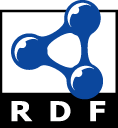Long-term trends in resource consumption in Latin America: Integrating the MEFA and STIRPAT approaches
Metadatos
Afficher la notice complèteEditorial
Elsevier
Materia
Resource extraction MEFA STIRPAT Latin America Long-term
Date
2025-09-19Referencia bibliográfica
Lozano-Morra, Javier, Iirarte-Goñi, Iñaki, Serrano, Ana. Long-term trends in resource consumption in Latin America: Integrating the MEFA and STIRPAT approaches, Ecological Economics. Vol. 240. https://doi.org/10.1016/j.ecolecon.2025.108801
Patrocinador
Aragon Government PID2021 – 123220NB - I00, S55_23R’, S40_23R’Résumé
This study investigates long-term trends and determinants of material consumption in Latin America, a region known for its rich natural resources and current environmental challenges. Using Material and Energy Flow Accounting (MEFA) methodology, the research analyzes Domestic Material Consumption (DMC) and Material Footprint (MF) across 17 Latin American countries from 1970 to 2019. An extended STIRPAT model evaluates the impact of macroeconomic, social, technological, environmental, and political factors on these indicators. The study distinguishes between direct and indirect material flows. The findings indicate that economic development alone cannot fully account for the increasing environmental pressure. Specifically, DMC per capita is more closely linked to raw material consumption compared to MF per capita. The research underscores an incomplete transition to industrialized agriculture, an increase in the importance of metallic and non-metallic minerals due to their growing extraction and consumption, and highlights the impact of social factors, such as life expectancy and human capital, on material consumption patterns. Additionally, technological advancements and the institutional context may also exacerbate environmental pressure. The study also reveals variations across different material categories, including biomass, fossil fuels, metallic minerals, and non-metallic minerals.
![pdf [PDF]](/themes/Mirage2/images/thumbnails/mimes/pdf.png)





